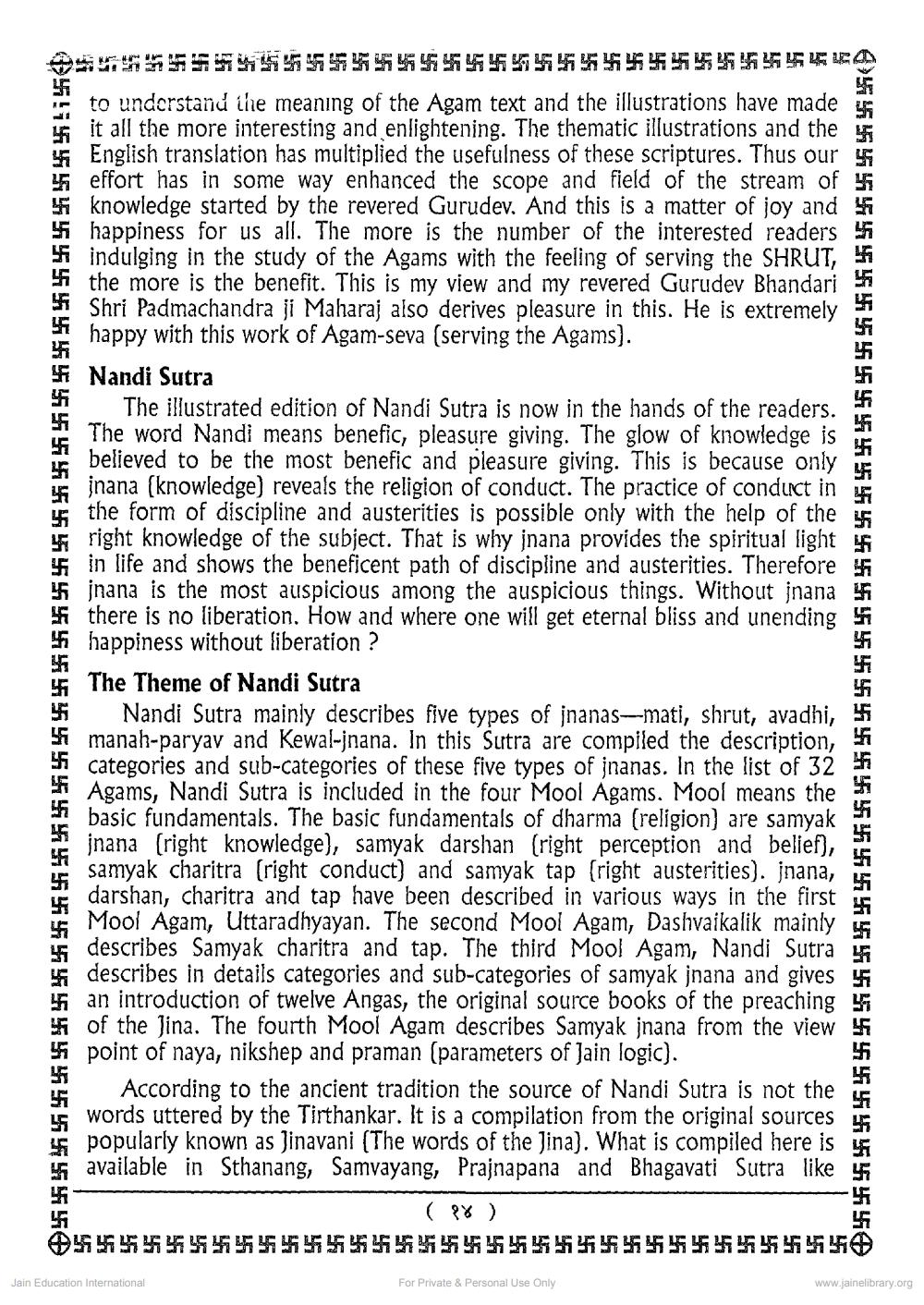________________
35
555
35
55555555555555555555567 36 35 36 36 36 456 45 V
卐
557
555
45 4
to understand the meaning of the Agam text and the illustrations have made it all the more interesting and enlightening. The thematic illustrations and the English translation has multiplied the usefulness of these scriptures. Thus our effort has in some way enhanced the scope and field of the stream of knowledge started by the revered Gurudev. And this is a matter of joy and happiness for us all. The more is the number of the interested readers indulging in the study of the Agams with the feeling of serving the SHRUT, the more is the benefit. This is my view and my revered Gurudev Bhandari Shri Padmachandra ji Maharaj also derives pleasure in this. He is extremely happy with this work of Agam-seva (serving the Agams).
The Theme of Nandi Sutra
Nandi Sutra mainly describes five types of jnanas-mati, shrut, avadhi, manah-paryav and Kewal-jnana. In this Sutra are compiled the description, categories and sub-categories of these five types of jnanas. In the list of 32 Agams, Nandi Sutra is included in the four Mool Agams. Mool means the basic fundamentals. The basic fundamentals of dharma (religion) are samyak jnana (right knowledge), samyak darshan (right perception and belief), samyak charitra (right conduct) and samyak tap (right austerities). jnana, darshan, charitra and tap have been described in various ways in the first Mool Agam, Uttaradhyayan. The second Mool Agam, Dashvaikalik mainly describes Samyak charitra and tap. The third Mool Agam, Nandi Sutra 5 describes in details categories and sub-categories of samyak jnana and gives an introduction of twelve Angas, the original source books of the preaching of the Jina. The fourth Mool Agam describes Samyak jnana from the view
point of naya, nikshep and praman (parameters of Jain logic).
Nandi Sutra
The illustrated edition of Nandi Sutra is now in the hands of the readers. The word Nandi means benefic, pleasure giving. The glow of knowledge is believed to be the most benefic and pleasure giving. This is because only jnana (knowledge) reveals the religion of conduct. The practice of conduct in the form of discipline and austerities is possible only with the help of the right knowledge of the subject. That is why jnana provides the spiritual light in life and shows the beneficent path of discipline and austerities. Therefore jnana is the most auspicious among the auspicious things. Without jnana there is no liberation. How and where one will get eternal bliss and unending happiness without liberation ?
According to the ancient tradition the source of Nandi Sutra is not the
words uttered by the Tirthankar. It is a compilation from the original sources
popularly known as Jinavani (The words of the Jina). What is compiled here is available in Sthanang, Samvayang, Prajnapana and Bhagavati Sutra like
( १४ )
55555555555555555555550
Jain Education International
5555555555556666666555555555555
For Private & Personal Use Only
www.jainelibrary.org




